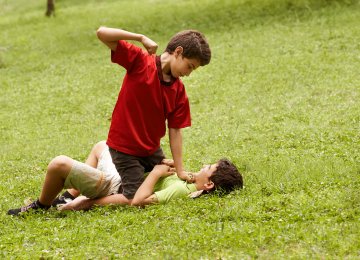Adolescents who engaged in violent activities were more likely to have friends – and friends of friends – who had been violent, a new study shows.
“Violent acts tend to cluster through social networks, and they spread like a contagious disease from one person to another,” the study’s senior author Brad Bushman said in a phone interview, Reuters Health reported.
A psychology and communications professor at The Ohio State University in Columbus, Bushman analyzed interviews from the 1990s with nearly 6,000 American students in grades seven through 12.
Compared to students whose friends had never hurt anyone, kids with a friend who had badly hurt someone were themselves 183% more likely to report having badly hurt someone, too, the report in the American Journal of Public Health shows.
If a friend had pulled a weapon on someone, the youth were 140% more likely to have pulled a weapon, and if a friend had been involved in a serious fight, the youth were 48% more likely to have been in a serious fight.
In male students alone, the likelihood of seriously hurting someone rose 82% for each additional friend who had seriously hurt someone.
The association extended beyond immediate friends and friends of friends with four degrees of separation for serious fights and three degrees of separation for threatening someone with a weapon.
“It’s the first study we know of to see how far it spreads – up to four degrees, which is pretty amazing,” Bushman said.
Dr. Gary Slutkin, an epidemiologist and infectious-disease control specialist, fully expected the results.
“You’re doing what your friend is doing, who’s doing what his friend is doing, who’s doing what his friend is doing,” he said. “You’re not thinking about consequences. You’re thinking about what your friends do.”
Contagious Epidemic
“This is one of now hundreds of studies that, if you add them all up, there’s no way of seeing it other than violence being a contagious epidemic health problem,” said Slutkin, founder of Cure Violence at the University of Illinois at Chicago School of Public Health.
Slutkin has applied his understanding of friends motivating friends for better or for worse in his work fighting street violence throughout the world.
By employing former gang members to interrupt and prevent violence, he has seen communities slash violent crimes by 40 to 100%.
“Punishment is not the way out of this problem. It’s like treating a patient over and over again with the wrong medicine.”
In order to get behaviors to change, you have to be interactive with people in your own peer group,” Slutkin said.






Add new comment
Read our comment policy before posting your viewpoints